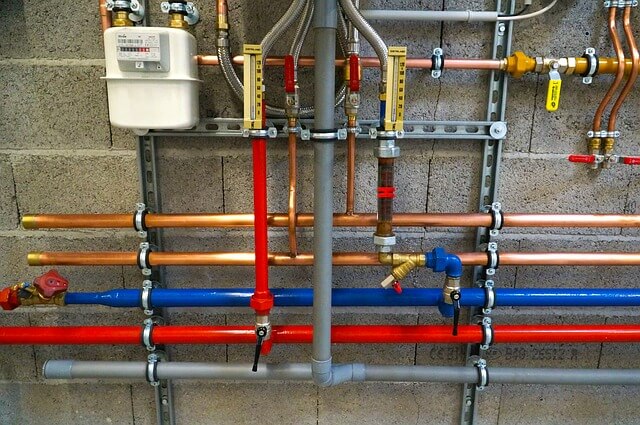Overview
Cross-linked polyethylene (PEX) supply pipe may be the biggest breakthrough in the world of plumbing since the flush toilet. PEX is a type of flexible plastic that is currently being used to replace traditional copper and galvanized steel as the water supply lines in a lot of construction projects.
Both new construction and remodeling projects are seeing PEX being used more and more. What people need to know more about is what this material is where it can be used and where it should not be used, as well as all the pros and cons of this increasingly popular commercial plumbing supply material.
PEX Then and Now
This cross-linked polyethylene was formulated in 1968 by Thomas Engle, a German scientist who used radiation to produce a more supple form of material that could be fashioned into flexible PEX pipe. This PEX tubing arrived in the United States in the 1980s and was mostly used in radiant floor heating systems.
Still used in radiant floor heating systems, PEX tubing problems arose in the earlier versions because they tended to deteriorate slightly over time due to the high chlorine levels common in US water-delivery systems. Adding antioxidants during the manufacturing process made PEX more suitable for carrying drinking water.
Other PEX tubing problems became apparent when the fittings used to connect the pipes in early PEX systems failed and leaked. Improving the fittings solved that problem and today PEX is used in more than 60 percent of newly constructed residential supply systems.
Pros of Using PEX Tubing
A big plus for using PEX is that it does not require soldering as with copper or galvanized steel. Other benefits of using PEX include:
- the ability for it to expand, making it more resistant to freeze cracking than copper or steel.
- the fact that it does not corrode, which can happen with copper and steel pipes which then leads to leaks and contamination of the water supply.
- silent water flow through PEX, eliminating the noises sometimes associated with metal piping.
- red and blue color-coding that easily distinguishes hot and cold supply lines.
- the fact that PEX can be connected to existing metal supply lines with the correct fittings.
PEX Tubing Problems
Pex is not suitable for any outdoor use as ultraviolet rays cause it to break down rapidly. Usually, within a few months of installation outdoors, hardening and cracking can be seen.
Other PEX tubing problems are as follows:
- PEX cannot currently be recycled because it cannot be melted as other recyclable plastics are.
- do-it-yourself installation is not easy due to the fact that working with PEX requires special connectors and the right tools for different types of installation connections.
- PEX can tear under certain conditions.
How to Make Watertight PEX Connections
To make watertight connections with PEX tubing the right tools and supplies are required. Fittings and connectors must exactly match the size of the PEX tubing. The following methods are used for making watertight connections between PEX and existing copper or steel pipes or to fixtures. Fittings are also available for connecting different sized pipes.
Some common connection methods:
- Copper crimping – this is the most common connection method. A special PEX crimping tool is required for connecting PEX with copper crimping rings.
- Expansion connections – this method requires a special PEX expansion tool that stretches the diameter of the PEX tube prior to inserting the end of a fitting.
- Stainless Steel Clamps – this method requires a ratchet clamping tool to tighten stainless steel rings around PEX connections.
- Compression fittings – this method requires slipping a threaded brass nut over the end of the PEX tube, followed by a tapered plastic compression ring.
- Push-fit connections – these are fast and do not require special tools.
Have questions? At Hanover Supply Company, we are happy to help. Contact us today!

